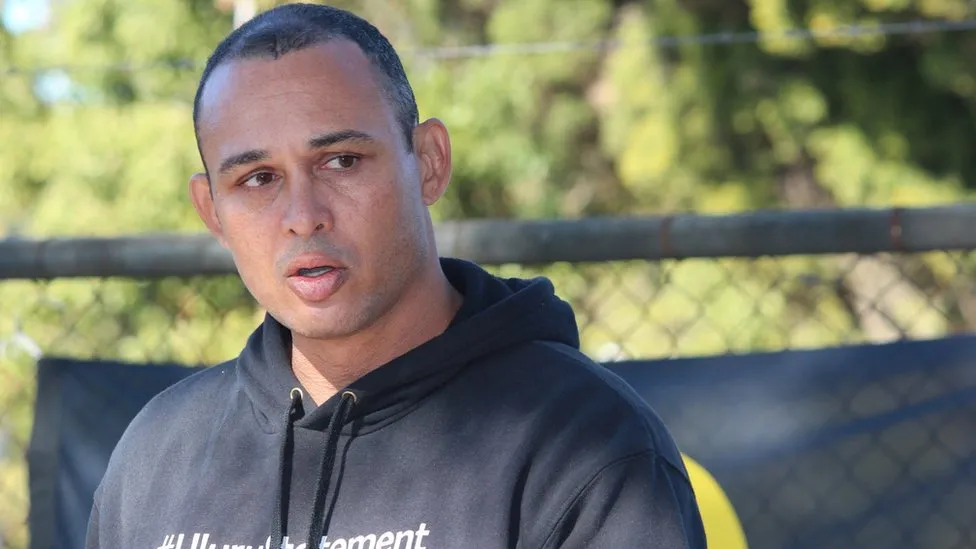by HANNAH RITCHIE

“People have been let off the leash,” Thomas Mayo says quietly, swiping through screenshots.
Racist memes depicting First Nations Australians as “grifters”, “wife beaters” and “primitives” flash across his phone.
Then, personal threats appear – accusing him of “providing cover for evil”.
Mr Mayo is one of the public faces of the Yes campaign in Australia’s historic Voice to Parliament referendum, to be held on 14 October.
If successful, the vote will change the nation’s constitution for the first time in 46 years, creating a body for Aboriginal and Torres Strait Islander people to advise the government on policies affecting their communities.
Opinion polls had long shown support for the change but now suggest the No vote is leading.
Though some argue the shift reflects public sentiment, Yes campaigners blame it on an ecosystem of disinformation – which they say is being led by figures in the No camp and “amplified” by suspicious accounts on social media.
Independent experts say the most “pernicious” and pervasive falsehoods “spreading like wildfire” online concern race.
Amid all the noise, concerns are growing over the mental health of First Nations communities, who find themselves at the centre of an increasingly divisive debate.
And questions are again being raised over whether Australia is ready to grapple with the open wounds at the heart of its nationhood.
Some of the most difficult chapters include massacres and violence against First Nations people and the theft of their land and livelihoods.
Aboriginal and Torres Strait Islander Australians weren’t counted in the nation’s census until 1971, and for most of last century many of their children were forcibly removed by the government under assimilation policies.
At the heart of the Voice is a debate that has long persisted in Australia over how to “close the gap” on the glaring disparities that First Nations people still experience. These include vastly poorer health, wealth, and education outcomes.
The suicide rate among Indigenous Australians, for example, is almost double that of non-Indigenous Australians. And despite representing less than 4% of Australia’s population, Aboriginal and Torres Strait Islander people account for 32% of prisoners.
Prime Minister Anthony Albanese has framed the Voice as “a once-in-a-generation opportunity for real, overdue and much-needed change”. Supporters say it will lead to greater self-determination for First Nations communities.
The No campaign says the Voice will have too much power though – arguing it will undermine government processes and clog up the courts with its objections.
But the Voice will have no power of veto and many fears raised by the No campaign have been debunked or strongly disputed, including by Australia’s solicitor-general.
Disinformation ‘ecosystem’
The debate online has been dominated by discussions of race, say fact-checkers and monitors.
“Race is a prime vector for abuse, trolling, disinformation and conspiracy theorising and on the No side of the debate, Twitter [X] is rife with that,” says Dr Timothy Graham, a digital media lecturer who has analysed over 250,000 Voice-related posts.
The Australian Associated Press’ FactCheck team – which has been hired to monitor content on Facebook, Instagram and TikTok – has noticed the same on those platforms.
The official campaign has only just begun, but they are already seeing volumes of misinformation and disinformation that outstrips what they saw at Australia’s 2022 election, says editor Ben James.
BBC for more
(Thanks to Razi Azmi)
